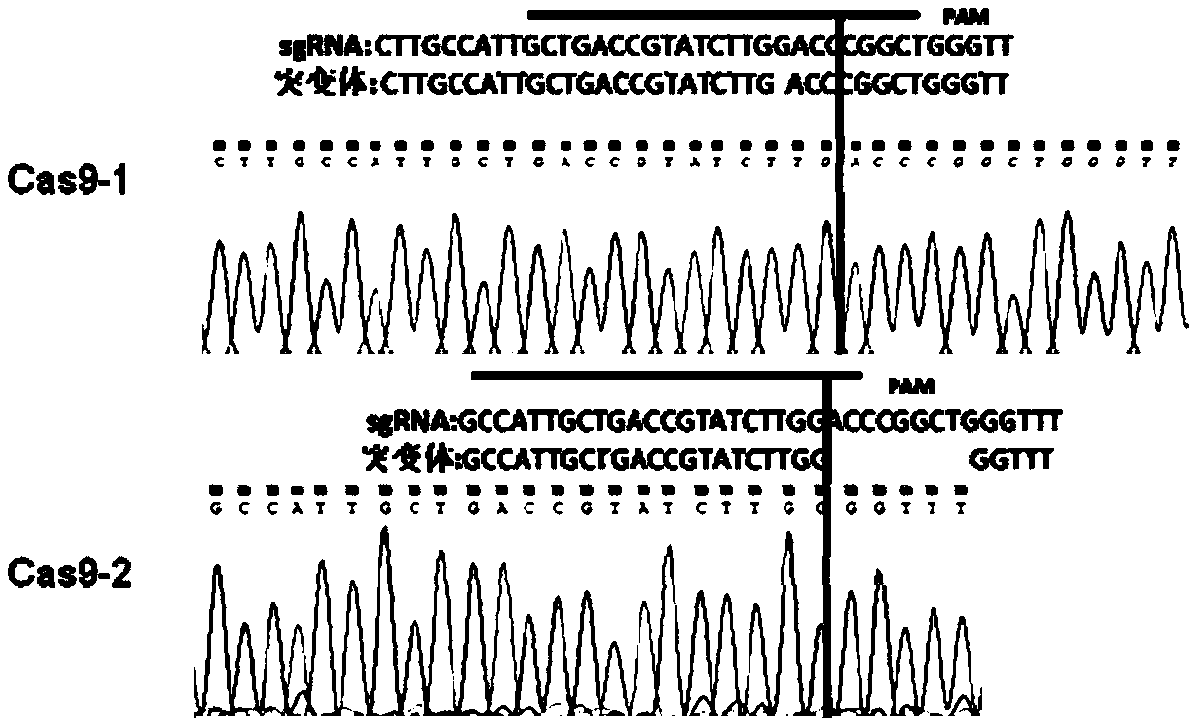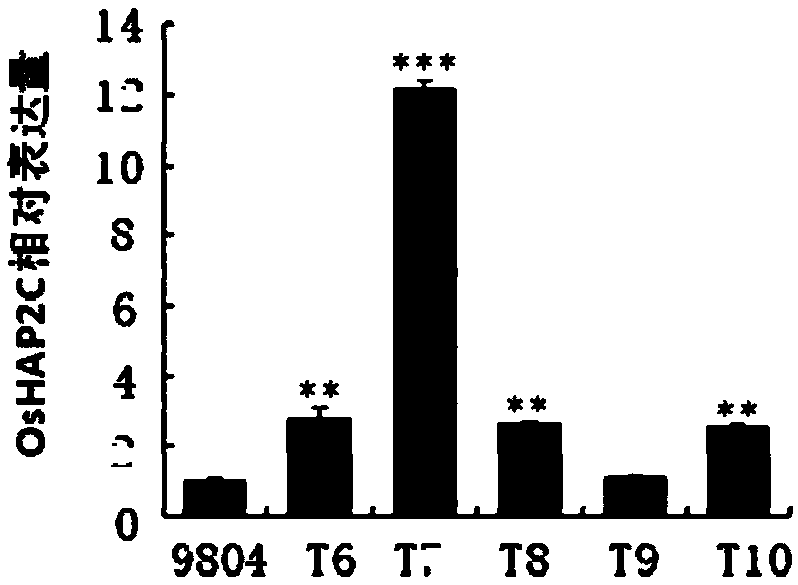OsHAP2C (oryza sativa heme activator protein 2C) and application of encoding genes thereof to regulating rice bacterial leaf blight resistance
A disease-resistant, transgenic plant technology, applied in application, genetic engineering, plant genetic improvement, etc., can solve the problem of lack of OsHAP2s
- Summary
- Abstract
- Description
- Claims
- Application Information
AI Technical Summary
Problems solved by technology
Method used
Image
Examples
Embodiment 1
[0113] Example 1, OsHAP2C can regulate rice bacterial blight resistance
[0114] This embodiment provides a protein named OsHAP2C derived from 9804 rice, its sequence is the 240-448th position of sequence 3 in the sequence listing, the sequence of the coding region of the OsHAP2C gene in 9804 rice is sequence 2 of the sequence listing, the genome The sequence is sequence 1 in the sequence listing.
[0115] 1. Construction of recombinant vector
[0116] 1) OsHAP2C gene expression vector
[0117] Total RNA was extracted from 9804 rice leaves and reverse transcribed into cDNA. Using the cDNA obtained in the above steps as a template, PCR amplification was performed using primers attB-F: 5′-AAGCAGGCTTTGACTTTATGCAAAGTTTGTTTGCATCTA-3′ and primers attB-R: 5′-GGGTCTAGAGACTTTAGCGCCCTCTTTCGCACGAC-3′ to obtain amplified products. Through BP reaction, the amplified product obtained in the above steps was introduced into the vector pGWC to obtain the positive entry clone plasmid pGWC-Os...
Embodiment 2
[0164] Example 2, the expression level of OsHAP2C gene after inoculation of Xoo bacterial strain KS6-6
[0165] 1. Inoculation of rice line 9804 with Xoo strain KS6-6 and leaf sampling
[0166] The seeds of 9804 rice were sown in seedling trays filled with sterilized soil, cultivated in the greenhouse for 25 days, and then transplanted into the net room, and planted as a single plant. At the full tillering stage of rice plants, Xoo strain KS6-6 was used to artificially inoculate rice plants by leaf-cutting method, and each plant was inoculated with 5 leaves. After 0, 2, 4, 8, 12, 24, and 36 hours of artificial inoculation, the inoculated leaves were clipped and quickly frozen in liquid nitrogen, and three biological replicates were taken for each sample. All samples were frozen in liquid nitrogen and stored at -70°C.
[0167] 2. Real-time quantitative PCR analysis
[0168] RNA extraction: TRIZON reagent was used to extract the total RNA of the sample, and the purity of the ...
PUM
 Login to View More
Login to View More Abstract
Description
Claims
Application Information
 Login to View More
Login to View More - R&D
- Intellectual Property
- Life Sciences
- Materials
- Tech Scout
- Unparalleled Data Quality
- Higher Quality Content
- 60% Fewer Hallucinations
Browse by: Latest US Patents, China's latest patents, Technical Efficacy Thesaurus, Application Domain, Technology Topic, Popular Technical Reports.
© 2025 PatSnap. All rights reserved.Legal|Privacy policy|Modern Slavery Act Transparency Statement|Sitemap|About US| Contact US: help@patsnap.com



